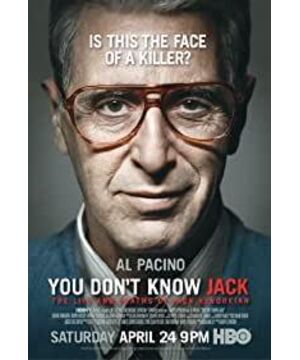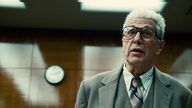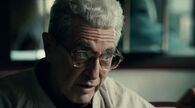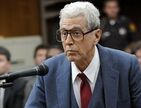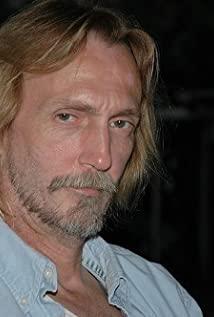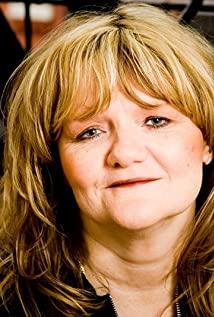The word Euthanasia comes from the Greek and consists of the words "good" and "death", which together means euthanasia, meaning a painless death. When it comes to this topic, I have to mention the real-life adaptation of the film "Doctor Death" (2010) starring Al Pacino. The original title of the movie, You don't know Jack, is a slang term that means "you know a yarn", and the protagonist's good name is Jack Kewerkian (hereinafter referred to as "Koch"), which can be described as a pun.
Koch is a radical and stubborn character. In addition to his identity as a doctor, he is also a painter and composer. During the Korean War, he studied corpses and transfused blood to living people, and was committed to promoting euthanasia in the United States. There are three forms of euthanasia in the film, Koch mainly adopts the last one, and uses the first one at the end:
*Active euthanasia: Doctors end the patient's life by injection, etc. according to the patient's wishes;
*Passive euthanasia: if the patient's life-support system is removed, the patient is allowed to die;
* Assisted suicide: The patient entrusts the doctor to cooperate and relies on certain instruments to commit suicide.
On the way forward for Koch, the biggest obstacle encountered is religious conservative forces. They believe that human life and death can only be determined by God, just as the 17th century British philosopher John Locke believed that human life does not belong to the property of individuals, but the property of God, and human beings are just borrowers. Therefore, Koch's behavior is tantamount to appropriating or stealing God's property, and it is a huge insult to the divine life. Yet there is not much market for such an argument in atheistic land.
In today's increasingly enlightened world, death is no longer a secret topic. The number of people accepting euthanasia is also gradually increasing, and the voices of protest are also heard. For example, after legalization, it will become a new method for murderers, which will inevitably expand the scope and so on. But after careful analysis, they are not against euthanasia itself, but mainly out of concerns about legal practice. In fact, I can't think of anything to oppose on the rational level, the self-determination of human life, the simple and superficial liberal concept. The following is a brief discussion of specific practices in various situations.
I vegetative life choices
There is a very important principle in the implementation of euthanasia, that is, the principle of voluntary, which also requires that the patient must be in a state of "free will" when making a decision. Regrettably, the vegetative person is stuck in this awkward position, unable to express his wishes now. The patient has a slim chance of waking up. Does it mean that he is alive at this time, or is it just a body without a soul?
After ten years, the French vegetative Longbert incident finally settled. Back in 2008, the 32-year-old Longbott became a vegetable after a car accident. As early as 2005, France passed the "Leonetti method" to stop treatment for certain patients. So in 2013, the hospital, along with his wife, nephew and most siblings, agreed to extubation. But his parents were firmly opposed and appealed more than ten times. It was finally this year that the court ruled that the hospital could perform passive euthanasia.
In fact, this long tug-of-war can be avoided entirely by means of an "advance will". All states in the United States have more or less recognized "living wills". As long as they are signed, the signer no longer has to accept medical procedures to survive in certain circumstances. Or "Pre-established Medical Appointment Letter of Appointment", the signer can designate a person, and that person will dominate his life and death when he is not aware of it. In Taiwan, there is a similar "Palliative and Palliative Care Regulations".
II huge physical pain
Most of the cases shown in the film fall into this situation. However, some specific conditions are required to accept such patients: "Before accepting assisted suicide, the applicant will be fully interviewed by Koch. Any patient applying for assisted suicide must be evaluated by a psychiatrist. For patients who claim to suffer from pain for a long time, they will be treated by pain treatment. Consultation with specialists. Koch reviews the patient’s medical records in detail before accepting an assisted suicide request. The applicant suffers from an incurable disease or faces intolerable side effects during treatment. Assisted suicide must not be performed within 24 hours of the patient’s last request ”
In the process of assisted suicide, Koch will videotape the whole process, showing the patient's voluntary will. And the condition must be confirmed by a doctor that it is suffering from great physical pain and is irreversible. The last point is to rule out the patient's "phased" thinking and make sure it's their deliberate decision. Coupled with psychological evaluation, through this series of measures, the situation of "disguising murder as euthanasia" in the mouth of some worryers is prevented.
III Great mental pain
In addition to "Death Doctor", there is another euthanasia-themed movie "Deep Sea Sleep" (2004), which is based on the personal experience of the Spaniard Raymond Sampedro. At the age of 26, Raymond fell into a high level of paralysis by diving and was unable to kill himself and had to resort to euthanasia. However, due to the blankness of relevant laws and regulations, he struggled for about 30 years in this journey of seeking death. The pastor who persuaded him said, "Freedom that restrains life is not true freedom." Raymond responded, "Life that restrains freedom is not true life." The police arrested his girlfriend on assisted suicide charges, and the town continued More than 3,000 people "surrendered themselves" to the police, admitting that they were involved in the incident.
There are also cases of "great mental suffering" applying for euthanasia in "Doctor Death", but there is still a big difference between Raymond and his colleagues. Koch interviewed a young athlete who fell into a severe depression after being unable to return to play due to injuries, and even attempted suicide by dousing himself with gasoline. However, in the end Koch rejected him, not only because he was not terminally ill, but also because Koch believed that he was in a staged mental depression at this time, not a state where he could make a sober decision. This is not the same as Raymond's physically disabled but sane condition.
It needs to be clarified here that it is not "send all patients in wheelchairs to see God", but to have an option to spare. After all, the film "Untouchable" (French version 2011/US version 2017), which is also adapted from life, tells the story of a high-level paraplegic who loves life, isn't it?
Planned Death of IV Healthy People
Now let's use our imagination a little bit, step out of the "doctor-patient" framework and take a step forward. What if euthanasia was no longer just for the suffering patients, but expanded into a pre-planned death of healthy people?
Ms. Jacqueline Jeanque Geller from France is vice-president of ADMD, a pro-assisted suicide group, and a member of the Swiss group Exit for the right to die. She feels that even if France expands the "Leonetti Law" mentioned above, it is not enough. The government should give citizens over the age of 75 but still healthy citizens the right to choose to die. In her interview with VICE, it is not difficult to see her thoughts: "When you are old, your health is not good, you can't drink an umbrella and can't jump, it's better to keep a good time."
To be honest, my feeling is: take off your pants and fart. This kind of thinking has completely gone beyond the scope of traditional euthanasia. The subtext of euthanasia is to relieve pain and maintain human dignity. She is promoting suicide rather than euthanasia. And because of the unaccountability of suicide (the police successfully killed the teenager to prevent him from committing suicide?), in fact, it makes no difference whether it is legal or not. I don't see the need to implement laws and establish national institutions at all. As early as 1991, the Poison Hemlock Society published the suicide guide "The Last Exit", which caters to various groups of people in various ways.
When we talk about euthanasia, we think of humanistic care. When it comes to suicide, everyone will think of the preciousness of life. The same "voluntary end of life" has a completely different attitude. It seems contradictory, but it is not, because euthanasia can be regarded as an abnormal love for life, while suicide is often not.
V China's Euthanasia Process
In June 1986, Wang Ming, a native of Shaanxi Province, wanted to save his mother who was suffering from advanced liver cancer from the pain as soon as possible, so he applied to his attending doctor Pu Liansheng and performed "euthanasia". The two were charged with intentional homicide until April 1991. acquitted. This is the first case of "euthanasia" in China. In 1988, two years after the incident, Yan Renying and Hu Yamei proposed the legalization of euthanasia as a motion for the first time at the National People's Congress: "Birth, old age, sickness and death are the laws of nature, but rather than let some terminally ill patients suffer painfully, it is better to let them legally. End their lives peacefully.” In 2002, Wang Mingcheng, who performed euthanasia for his mother, suffered from advanced gastric cancer. His application for euthanasia was rejected and he died the following year. China's proposal to legalize euthanasia has yet to pass.
View more about You Don't Know Jack reviews


